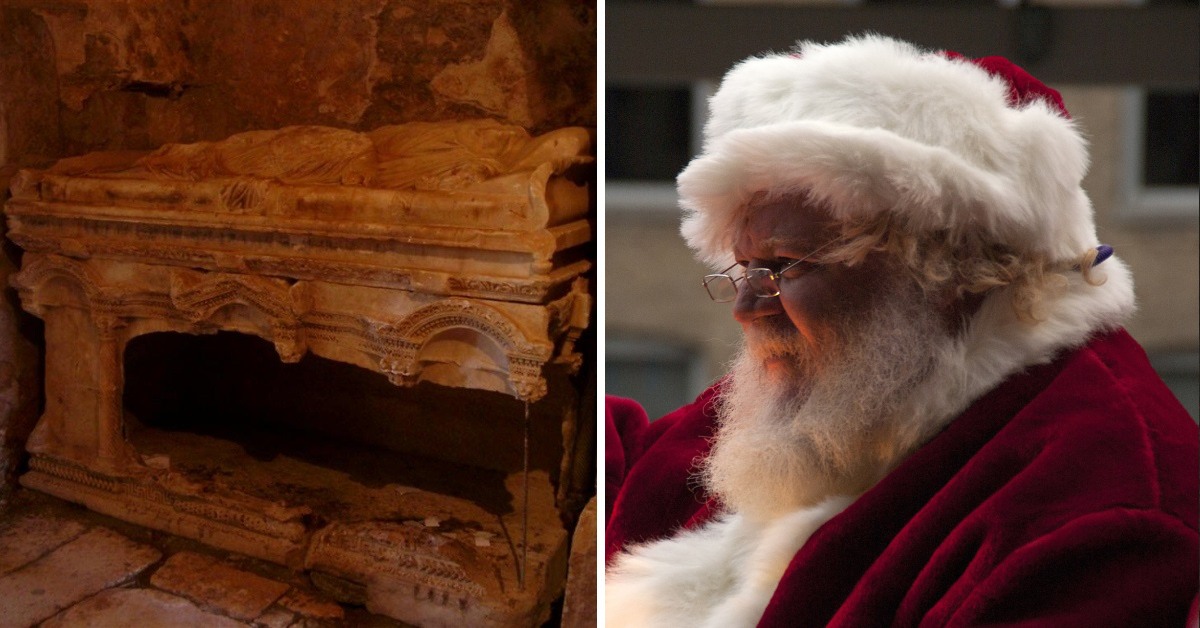The popular icon of Christmas, who brings gifts to millions around the world every year, is actually real – even though his story began a long time ago, in the late 3rd century. The Santa Claus we know today is based on traditions associated with the patron of sailors, Saint Nicholas.

St. Nicholas was born sometime around 280 A.D. in Patara, the area of modern day Turkey, during the time of the Roman Empire. According to tradition, he was known for his generosity and kindness, and was said to secretly give gifts to others. Sounds familiar?
In accordance with historical records, his body was laid to rest in Myra (now Demre), at the church that bears his name. The exact whereabouts of his remains have always been a controversial question, though. Recently, a team of archeologists discovered a shrine and burial grounds below the Church of Saint Nicholas, which they believe could answer the mysteries surrounding the final resting place of St. Nicholas.

Historical accounts on the life of Saint Nicholas are quite limited, and the references we mostly rely on today were written hundreds of years after his death. His legends might have grown out of actual events and they could contain some historical truth, but they might have also been enriched by imagination through the years. Perhaps the best known story of St Nicholas is when he secretly gave money to a poor family so that the father could pay for the dowries of his three daughters.
His popularity only grew over the centuries, and the story of him saving a ship from a terrible storm made him the saint-patron of sailors.
While many legends remain about his life, there is little certainty about his death. He is believed to have died on the 6th of December, which later became known as St. Nicholas Day. The St. Nicholas Church in Myra was built 200 years after his death. It is said that his remains were moved there from a church cut in rock, located on the small Turkish island of Gemile. This little island is thought to be his original burial ground; it was even called Saint Nicholas Island at a time.

There are rumors that during the middle ages his bones were stolen from Myra by Italian merchants and smuggled to Bari. His alleged relics and remains stolen by the merchants remain in the 11th-century basilica of San Nicola at Bari, which hence became a popular destination for pilgrims.
Bone fragments from Bari have been acquired by different churches all over the world, and in 2017 researchers were able to examine one such fragment. The piece of hip bone, from a church in the United States, was confirmed to be from the 4th century.
However, researchers faced the next twist in the story soon after, when Turkish archaeologists, using CT-scanning and geo-radar technology, found a shrine beneath the floors of St. Nicholas Church during a routine survey. Although they weren’t able to examine the site from closer, they believe the Italian merchants might have snagged the bones of someone else (likely an unidentified priest) and the remains of Saint Nicholas are still within the church in Myra.

The untouched sanctuary beneath the floors of St. Nicholas Church previously went unseen due to the intricate mosaics on the tiled floor. In order to get to the shrine, the excavation team will have to remove each tile in the mosaic one by one. Once the research in the church is completed, the preserved tiles will be returned to their original place. A process that is very complicated and will probably take a long time to finish.
“We believe this shrine has not been damaged at all, but it is quite difficult to get to it as there are stones with mosaics on the floor,” said Cemil Karabayram, head of Antalya’s Monument Authority. “Each tile will need to be removed one by one so the floor can be returned to its present glory.”

Karabayam is confident that he and his team will find the remains of the real Saint Nicholas in the underground tomb. The work has already begun, but there haven’t been any updates since. So, we don’t know if we can call it a day on the Saint Nicholas mystery just yet.
If the speculation turns out to be true, the area will definitely see a boost in tourism and pilgrimages. There is already another church in the town that even hosts a Santa Claus museum.
So Finland might have to pull their socks up.
Sources: 1, 2, 3, 4
